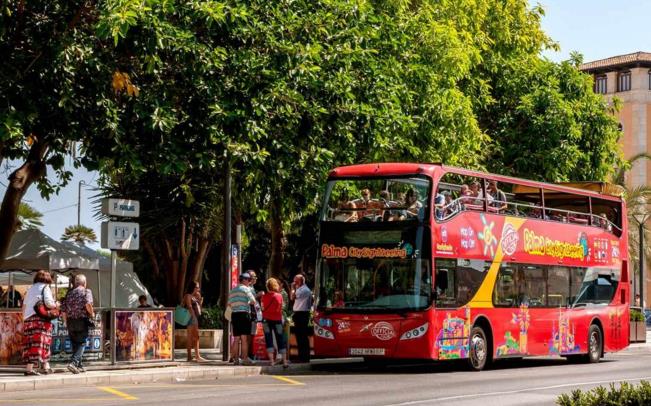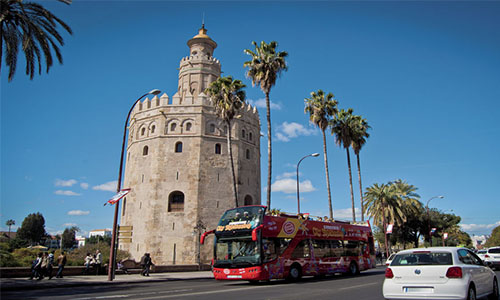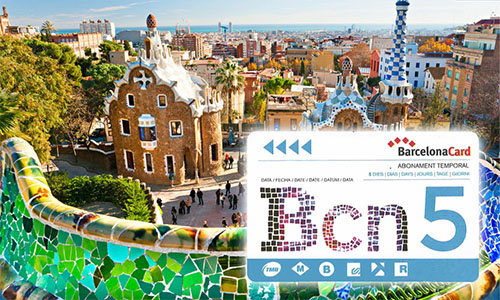A Comprehensive Travel Guide: Madrid, Segovia, and Ávila
This travel itinerary explores the vibrant Spanish capital of Madrid before venturing into the heart of Castile and León to discover two of Spain's most historic and enchanting UNESCO World Heritage cities, Segovia and Ávila. This loop from Madrid and back offers a perfect blend of world-class art, bustling city life, profound history, and stunning architectural marvels.
Trip Overview and Itinerary
This journey is typically undertaken over 4 to 5 days, allowing for a thorough exploration of each destination without feeling rushed. The recommended route is a circular one, starting and ending in Madrid, which serves as the perfect transport hub.
Day 1-2: Explore Madrid's major art museums, royal palace, and vibrant neighborhoods.
Day 3: Day trip to Segovia to see the Roman Aqueduct, Alcázar, and sample cochinillo.
Day 4: Day trip to Ávila to walk the complete medieval walls and absorb the spirit of Saint Teresa.
Day 5: Final explorations in Madrid, perhaps visiting the Retiro Park, before departure.
For those with more time, consider staying overnight in Segovia or Ávila to experience the cities after the day-trippers have left, when a more tranquil atmosphere descends.
Part 1: Madrid - The Vibrant Capital
Madrid, Spain's central capital, is a city of elegant boulevards, expansive, manicured parks, and world-renowned art museums. It pulses with energy from the early morning until late at night, offering an intoxicating mix of culture, cuisine, and contemporary life.
Key Attractions in Madrid
Museo del Prado: Home to one of the finest collections of European art, with masterpieces by Velázquez, Goya, El Greco, and Bosch. A visit here is a journey through Spanish history and soul.
Royal Palace (Palacio Real): The official residence of the Spanish Royal Family, though now used primarily for state ceremonies. Its 3,418 rooms make it the largest functioning royal palace in Europe. The throne room and royal pharmacy are highlights.
Museo Nacional Centro de Arte Reina Sofía: Spain's national museum of 20th-century art, showcasing brilliant works by Picasso (including the monumental Guernica), Dalí, and Miró.
Puerta del Sol and Plaza Mayor: The bustling, historical heart of the city. Puerta del Sol is Kilometer Zero for Spain's radial network of roads, while Plaza Mayor is a grand, portico-lined square perfect for people-watching.
El Retiro Park (Parque del Buen Retiro): A 125-hectare green oasis in the city center. Visitors can row boats on the lake, see exhibitions at the Palacio de Cristal, and simply relax amid beautiful landscaping.
Madrid Food & Drink
Madrid's culinary scene is a reflection of its status as a capital, drawing influences from all over Spain.
Cocido Madrileño: A hearty chickpea-based stew, perfect for a cold day. It's traditionally served in multiple courses.
Bocata de Calamares: A simple but iconic sandwich of fried squid rings in a crusty bread roll, often enjoyed in the bars around Plaza Mayor.
Churros con Chocolate: The classic Madrid breakfast or late-night snack. Dip fried dough churros into a thick, rich cup of hot chocolate.
Tapas Hopping in La Latina: The Cava Baja street is famous for its concentration of tapas bars. The tradition is to move from one bar to the next, sampling a small plate and a drink at each.
Transportation in Madrid
Madrid has an excellent and efficient public transportation system. The Metro de Madrid is extensive and the best way to cover long distances quickly. Buses complement the metro network perfectly. For visitors planning multiple museum visits, the Madrid Card or a combined Prado/Reina Sofía pass can offer savings. The city is also very walkable, especially its historic center.
Accommodation Tips for Madrid
Staying in or near the central districts like Sol, Huertas (Barrio de las Letras), or Salamanca provides easy access to major sights, dining, and nightlife. For a more local vibe, consider Chamberí or Chueca. It's advisable to book well in advance, especially during peak season and major festivals.
Part 2: Segovia - The City of the Fairy-Tale Fortress
A short journey from Madrid transports visitors to Segovia, a city perched on a rocky outcrop and boasting an incredible concentration of historical monuments. Its three crowning jewels—the Aqueduct, the Cathedral, and the Alcázar—create an unforgettable skyline.
Key Attractions in Segovia
The Roman Aqueduct: An awe-inspiring feat of engineering, this nearly 2,000-year-old structure was built without any mortar. Its two tiers of arches dominate the entrance to the old city and are one of the best-preserved Roman aqueducts in the world.
The Alcázar of Segovia: This castle, with its distinctive bow-shaped prow, is said to have been the inspiration for Walt Disney's Cinderella Castle. Visitors can explore its ornate rooms, the Armory Museum, and climb the Torre de Juan II for breathtaking panoramic views.
Segovia Cathedral (The Lady of Cathedrals): The last Gothic cathedral built in Spain. Its imposing size, elegant interior, and serene cloister are magnificent. The adjacent museum houses valuable religious art and tapestries.
The Jewish Quarter (Judería): A network of quiet lanes that whisper of Segovia's past as a center of Sephardic Jewish life before the 1492 expulsion. The Main Synagogue (now the Corpus Christi church) and the Jewish Cemetery are key sites.
Segovia Food & Drink
Segovia is synonymous with one dish above all others, but its culinary offerings are broader and deeply rooted in Castilian tradition.
Cochinillo Asado: Roast suckling pig is the undisputed king of Segovian cuisine. It's slow-roasted to perfection so the skin is crispy and the meat is incredibly tender. It's often ceremoniously cut with the edge of a plate in traditional restaurants like Mesón de Cándido.
Judiones de La Granja: A hearty stew made with large white beans from La Granja, chorizo, pork ear, and other meats.
Sopa Castellana: A garlic-based soup, often with bread and a poached egg.
Ponche Segoviano: A signature layered sponge cake filled with custard and covered with marzipan.
Getting to Segovia from Madrid
The most efficient way to reach Segovia from Madrid is by high-speed AVANT train from Madrid-Chamartín station to Segovia-Guiomar. The journey takes about 30 minutes. From the Segovia-Guiomar station, it's a 10-15 minute bus ride (Line 11) to the base of the Aqueduct. Alternatively, regular buses depart from Madrid's Moncloa bus station and take around 1 hour and 15 minutes, dropping passengers closer to the city center.
Part 3: Ávila - The City of Stones and Saints
Ávila, the highest provincial capital in Spain, is famous for its incredibly well-preserved medieval walls that completely encircle the old town. It is also globally known as the birthplace of the mystic Saint Teresa of Ávila, and her presence is felt throughout the city.
Key Attractions in Ávila
The Walls of Ávila (Murallas de Ávila): The complete, intact circuit of 11th-century walls is what defines Ávila. Visitors can walk along a significant portion of the ramparts (about 1.7 km), offering unparalleled views of the city's monuments and the surrounding plains.
Ávila Cathedral (Catedral del Salvador): A fortress-like cathedral that is physically integrated into the city walls. Its apse, known as the Cimorro, is one of the most robust parts of the fortifications. The interior is a masterpiece of Gothic architecture.
Basilica of San Vicente: A magnificent Romanesque church built outside the walls on the supposed site where Saint Vincent was martyred. Its Portico of Paradise is particularly noteworthy.
Convent of Saint Teresa (Convento de Santa Teresa): Built on the site of her birthplace, this convent complex houses a museum dedicated to her life and relics, as well as a Baroque church. It is a major pilgrimage site.
The Four Posts (Los Cuatro Postes): A small shrine on a hill overlooking the city. This is the definitive spot for photographing the entire span of Ávila's walls against the landscape.
Ávila Food & Drink
The cuisine of Ávila is robust and hearty, designed to fuel the body against the cold winters of the high plains.
Chuletón de Ávila: A massive T-bone steak from Avileña-Negra Ibérica cattle, renowned for its flavor and quality. It's typically grilled simply over coals and shared between two or more people.
Judías del Barco de Ávila: A delicate white bean stew, often cooked with sausage (chorizo) and ham.
Yemas de Santa Teresa: The city's most famous sweet: small, round candies made from egg yolks and sugar. They are rich, sweet, and a direct culinary link to the city's convents.
Hornazo: A savory meat-stuffed pie that is traditionally eaten on Easter Monday.
Getting to Ávila from Madrid
The most convenient way to reach Ávila from Madrid is by train. Regular Media Distancia and high-speed Alvia trains run from Madrid-Chamartín station to Ávila, with journey times ranging from 60 to 90 minutes. The Ávila train station is about a 15-20 minute walk from the city walls. Buses are also available from Madrid's Estación Sur (Méndez Álvaro) and take approximately 1 hour and 30 minutes.
Combining Segovia and Ávila in One Trip
For travelers pressed for time, it is possible to visit both Segovia and Ávila on a single long day trip from Madrid by utilizing bus services. However, this is a rushed itinerary. A more relaxed and recommended approach is to dedicate one full day to each city. While there is no direct train between Segovia and Ávila, there are regular bus services operated by companies like La Sepulvedana that connect the two cities via a transfer in Villacastín. The total journey takes about 1 hour and 15 minutes. This makes it feasible to stay overnight in one city after visiting the other before returning to Madrid.
Cultural Insights and Practical Tips
Siesta & Late Dining: Many smaller shops may close in the afternoon (roughly 2-5 pm). Spaniards dine late; lunch is typically from 2-4 pm and dinner from 9 pm onwards. Adjust your schedule accordingly.
Language: While English is spoken in tourist areas, learning a few basic Spanish phrases (Hola, Gracias, Por favor) will be greatly appreciated.
Tipping: Tipping is not as customary or large as in some countries. Leaving small change or rounding up the bill is standard in bars and cafes. In restaurants, 5-10% is generous for good service.
Weather: Madrid has hot summers and cold winters. Segovia and Ávila are at a higher altitude and can be significantly colder, especially at night. Pack layers and comfortable walking shoes.
Festivals: If your trip coincides with local festivals like Madrid's San Isidro (May), Segovia's Titirimundi Puppet Festival (May), or Ávila's medieval market (around Fiesta de Santa Teresa in October), you will experience the cities at their most vibrant.
A journey through Madrid, Segovia, and Ávila offers a profound understanding of Spain's diverse character—from its dynamic political heart to its deeply rooted historical and spiritual centers in Castile. This route promises an unforgettable tapestry of experiences for any traveler.



